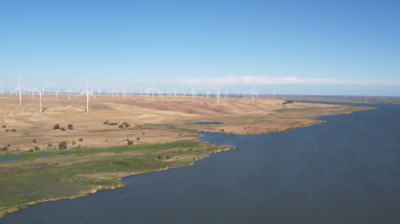Bay Area Agencies Must Work Together to Improve Transit System
As published in Bay Area News Group papers
For a region whose residents lead the nation in their support for public transit, you’d be forgiven for expecting the Bay Area to have an outstanding transit system. But anyone who rides transit here knows the reality: fares are high and rising, buses and trains are old and dirty, and services are often slow and infrequent.
If you’re dependent on transit, you’re going to spend a huge part of each day waiting for and riding the bus, especially if you live in an outlying area or work late or very early hours.
If you’re an occasional transit user? Good luck figuring how to get from point A to point B via some combination of the more than two dozen proudly independent transit operators in the Bay Area.
Life isn’t much easier for those who work at transit agencies either. With huge budget shortfalls today and as far as the eye can see, demoralizing service cuts and layoffs are the order of the day.
What is at the bottom of this mess? If you’ve followed the latest news, you might think that the state is to blame for taking money away from transit.
It’s true that the state has taken some transit funds, but the problems originated long ago and go much deeper. Sadly, most of the problems are self-inflicted. It has become clear that we are spending so much time and energy arguing among ourselves and pointing fingers that we are failing to work on the progress that we all want.
The latest example pitted two worthy goals — building a new BART rail link to Oakland International Airport, and backfilling cuts to local bus service — against each other. Any objective analysis would conclude that the Bay Area needs both, but what we’re likely to get is neither.
We’ve managed to convince ourselves that we can only get our own particular transit concern addressed if we make sure that someone else doesn’t. This is not a recipe for success.
The Bay Area spends more than $2 billion each year on public transit, including hefty chunks of money from bridge tolls, sales taxes and parcel taxes. Bay Area residents, however, choose transit for only 6 percent of their trips. It’s not just about insufficient funding — Bay Area transit funding has increased by 91 percent over the past decade, but ridership only increased by 7 percent.
This isn’t just a minor problem. The Bay Area is entering a new phase of its growth in which we will become increasingly reliant upon an effective, affordable public transit system. That’s because we’ve essentially tapped out the growth pattern of the past several decades in which our region sprawled into the hinterland, while loading more cars onto already congested highways.
Over the next several decades, new homes and jobs will need to come back to city centers and other zones that can support effective and convenient public transit. This is no longer a terribly controversial idea in the Bay Area — the Bay Area Council believes it, environmental and social equity groups believe it, Bay Area public officials believe it, and state law encourages it — but it does require a public transit system that works. We don’t have such a system, and we’re not going to get one by continuing in the direction that we’re heading.
The Bay Area can have world-class public transit, however, and I think that we must. It’s going to require more money for transit, and significant reform toward how public transit agencies use that money. The bad news is that no one is going to do this for us. The good news is that the Bay Area can largely do it on its own. We can identify what’s not working with transit, what we really want our transit system to look like, and how to best deliver those transit services that residents want. If we do it right, I am confident that Bay Area residents would support a modest regional tax increase that would make the system a reality.
All of us who consider ourselves public transit leaders need to take a step back and remind ourselves of the values and vision that we all share. We can agree to work together to achieve that vision, and we can commit to individual compromise in place of collective combat.
There’s only one way to make this happen, and that is together. Let’s put aside our disagreements, focus on our fundamental agreements and see how far we can get. We just might achieve something great and necessary for the Bay Area.





